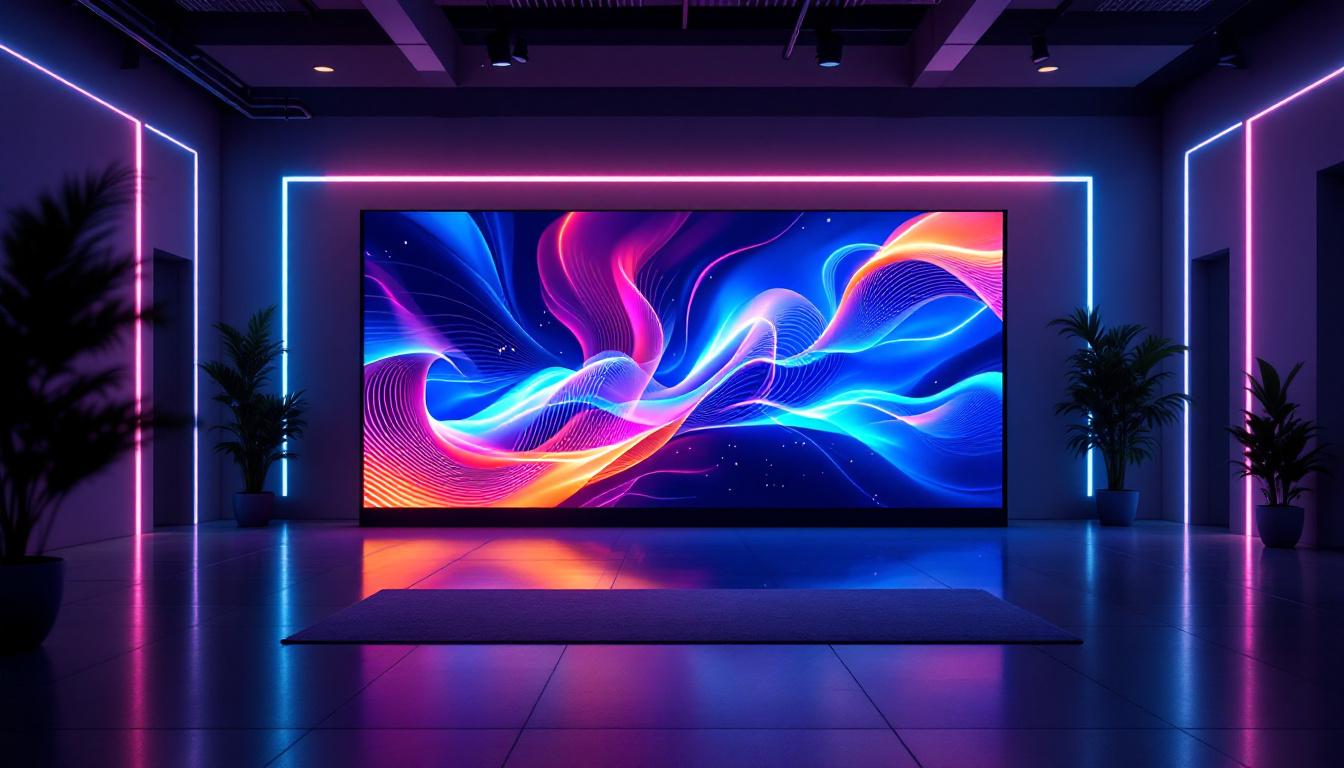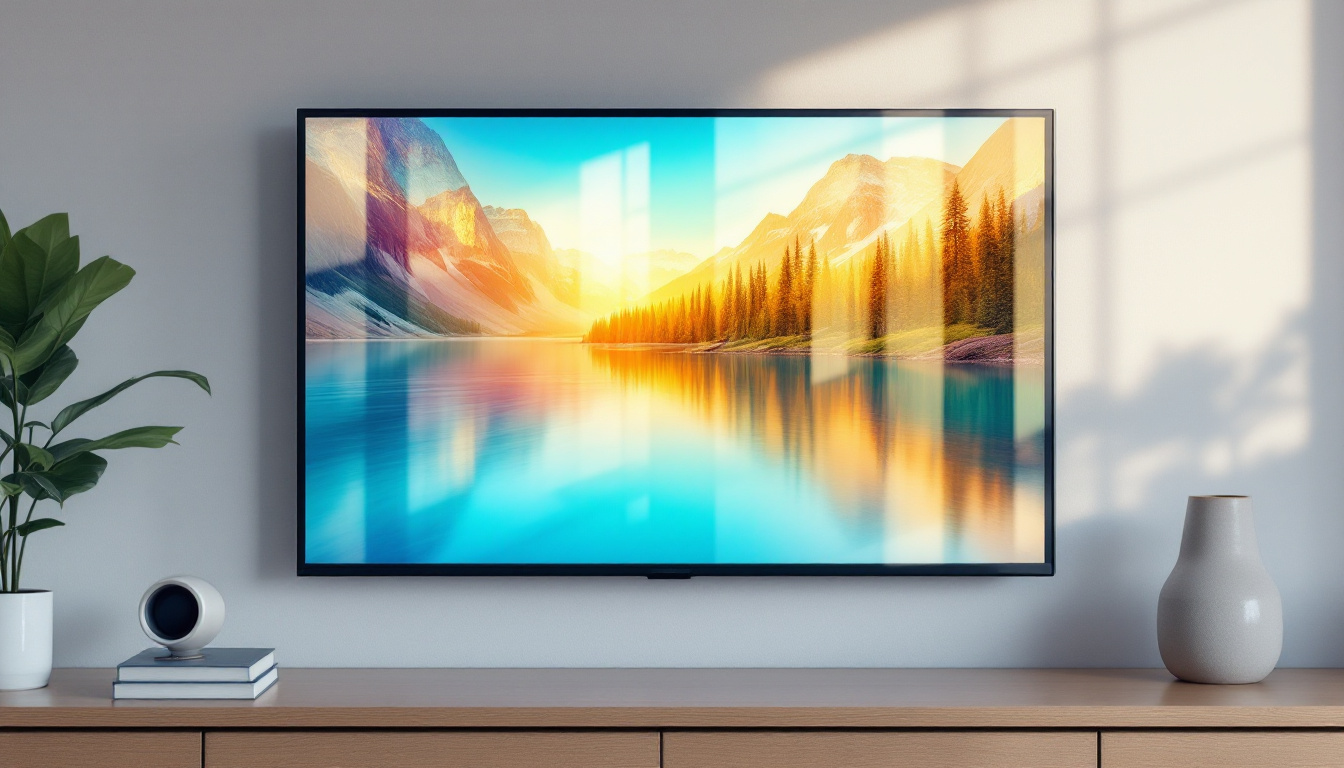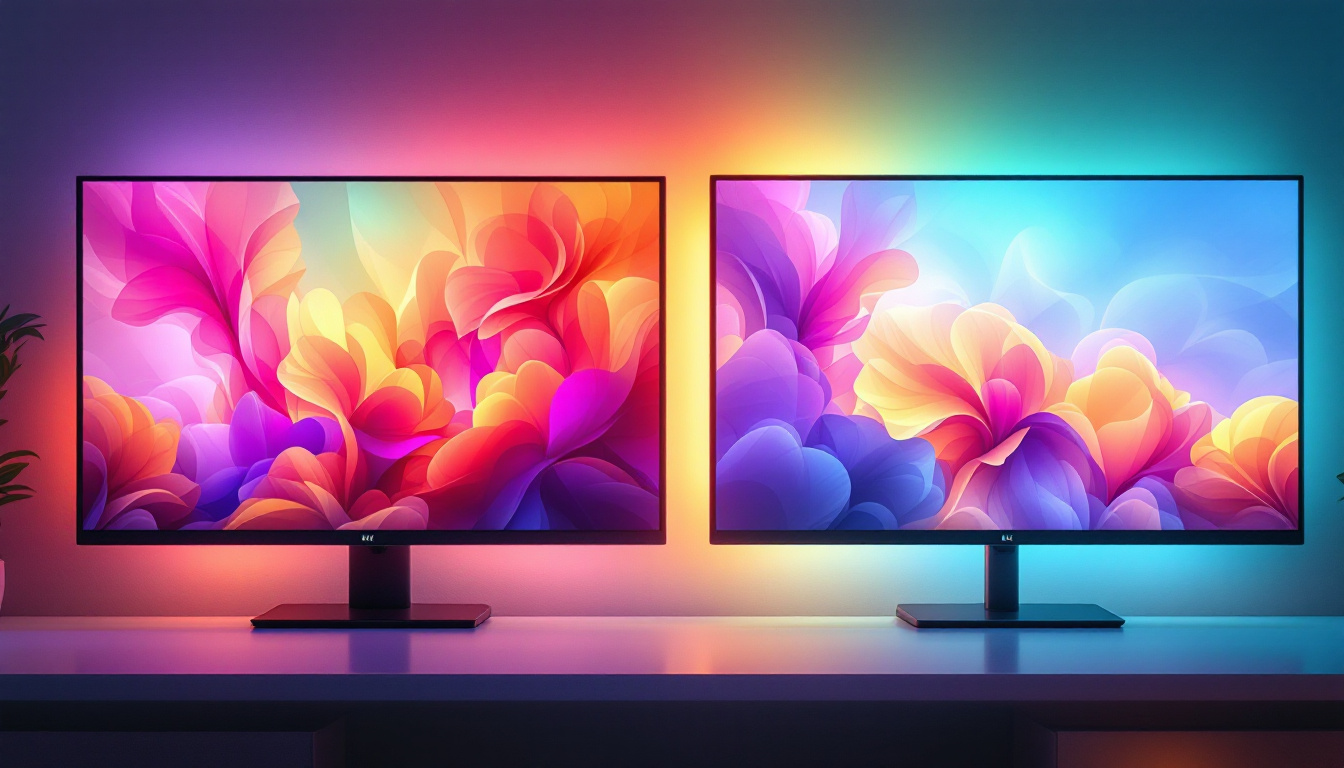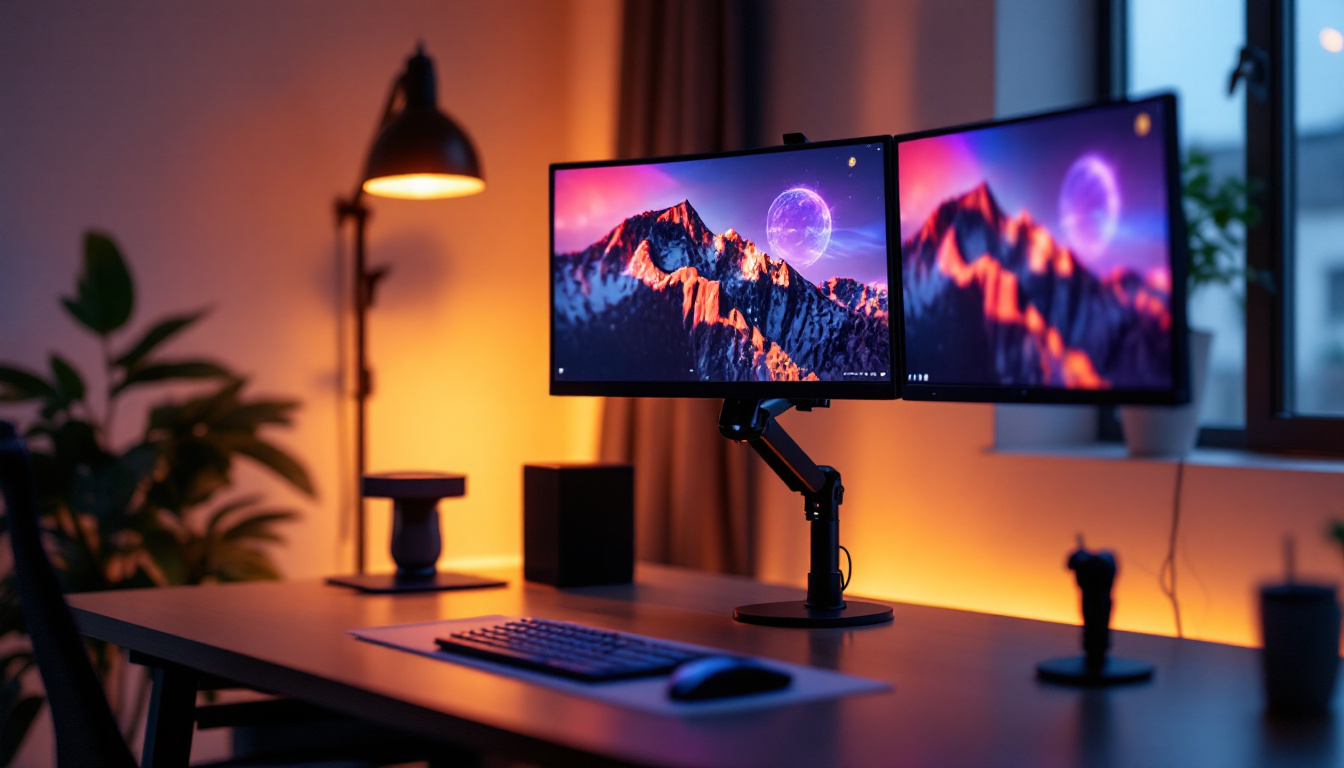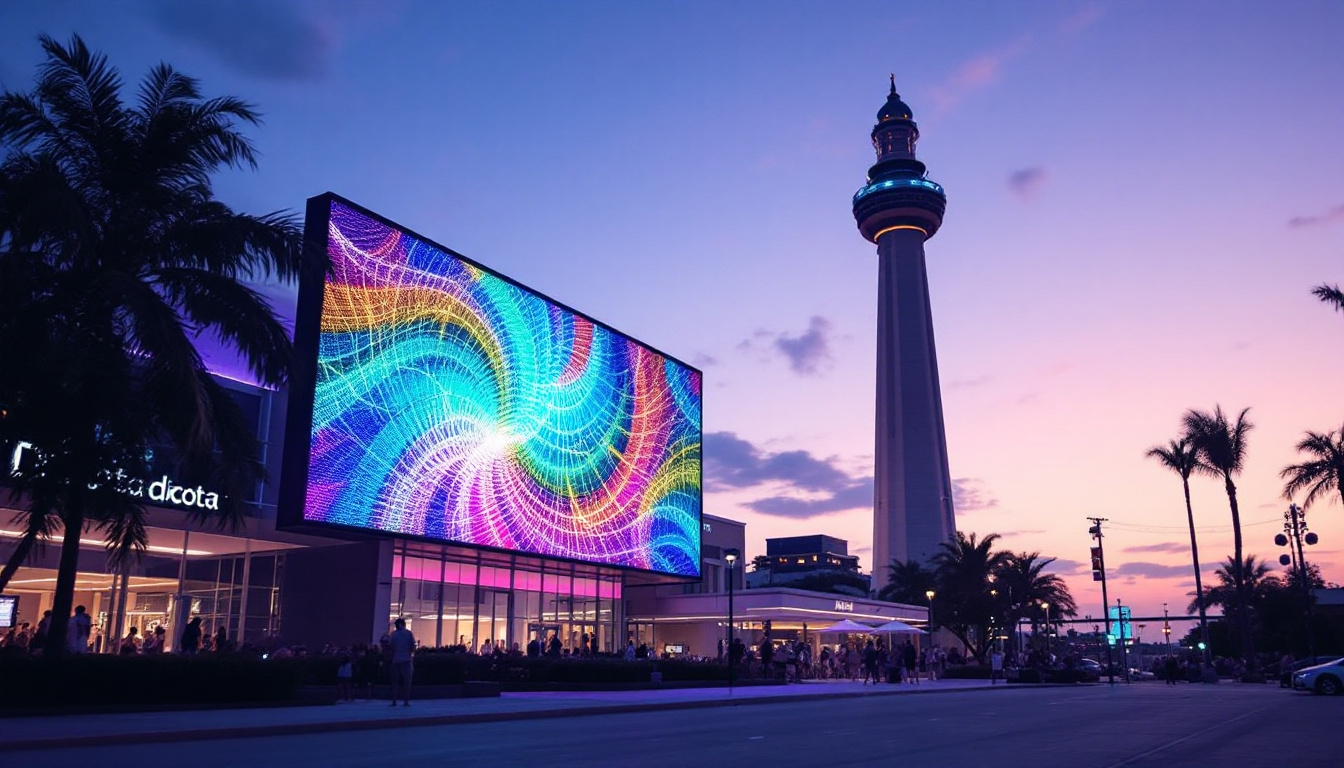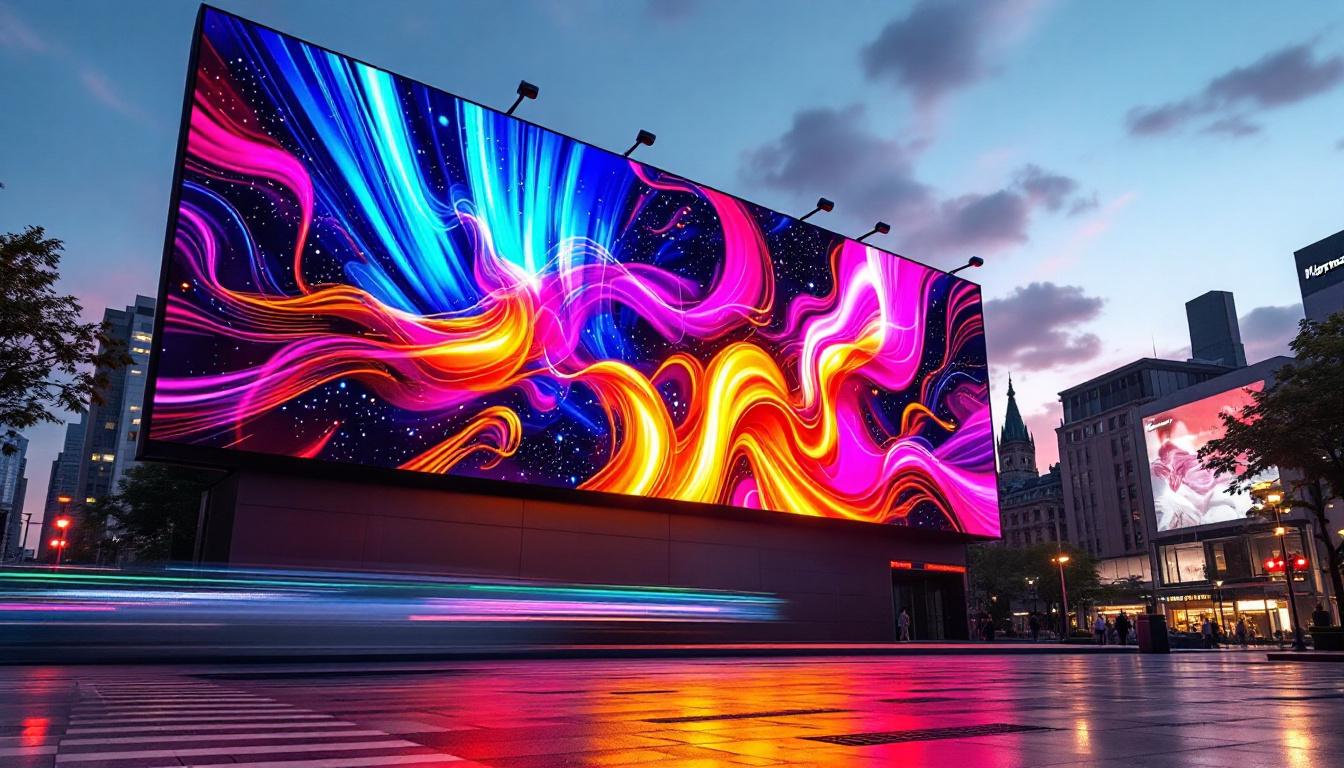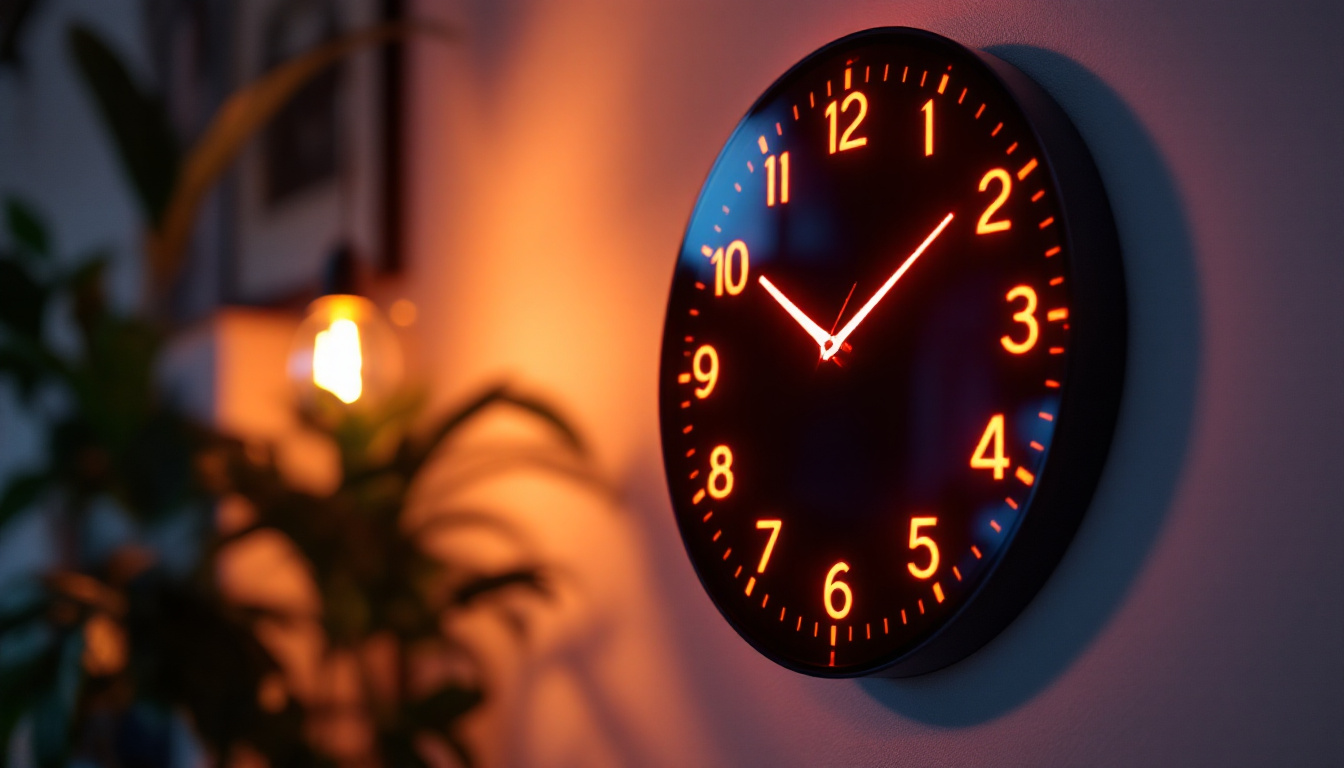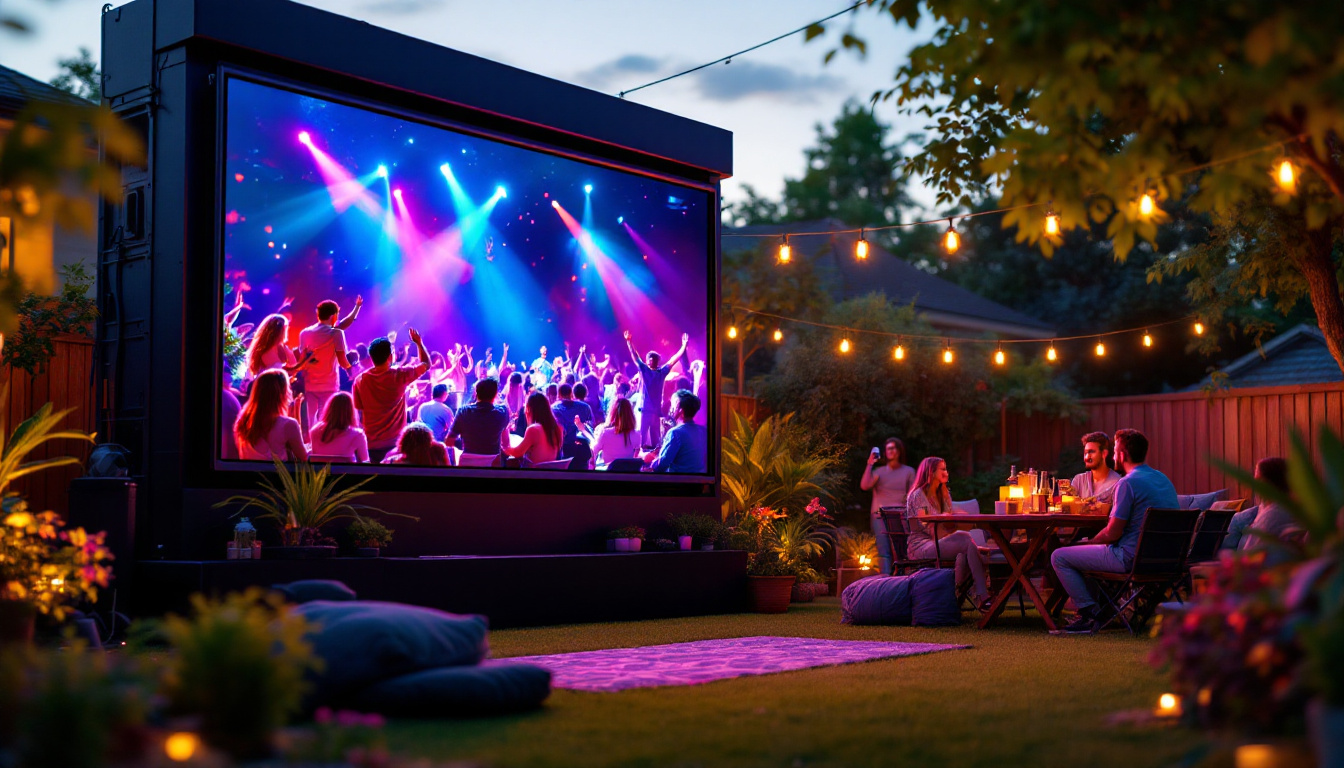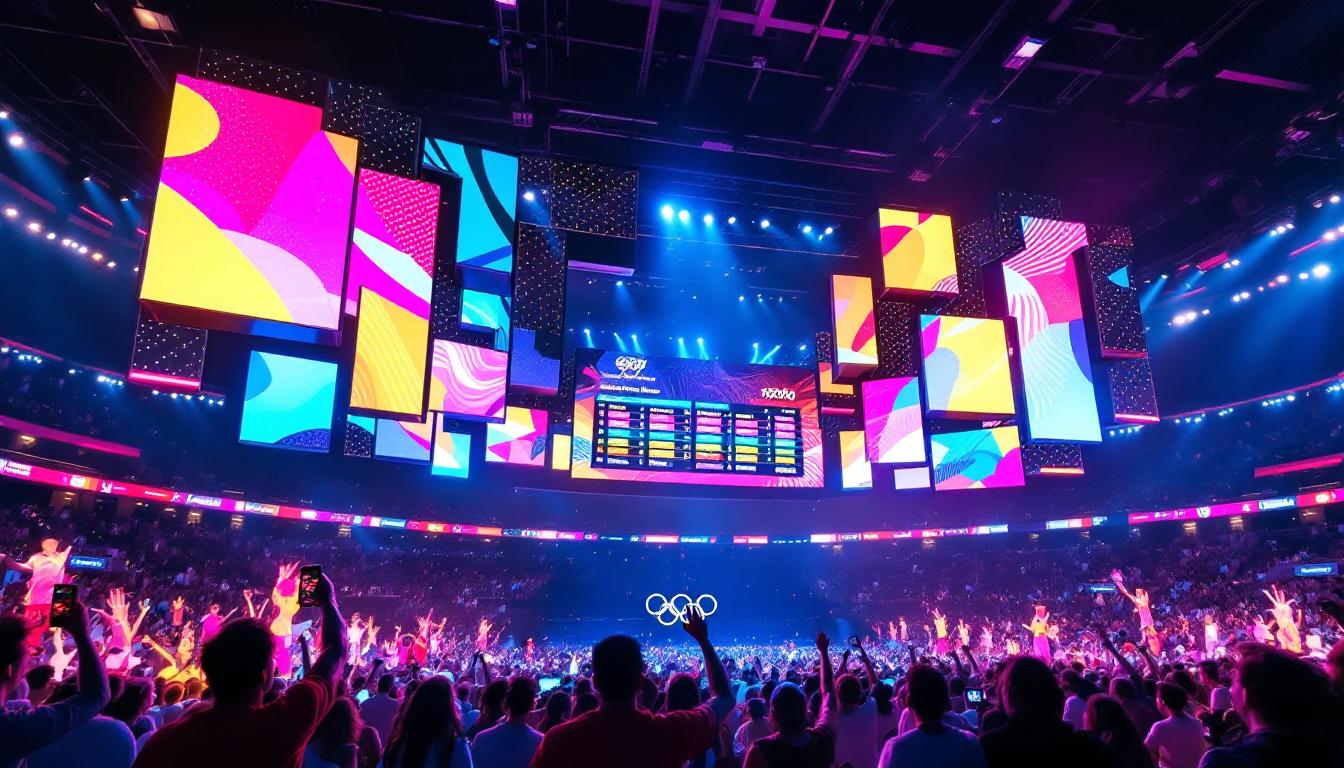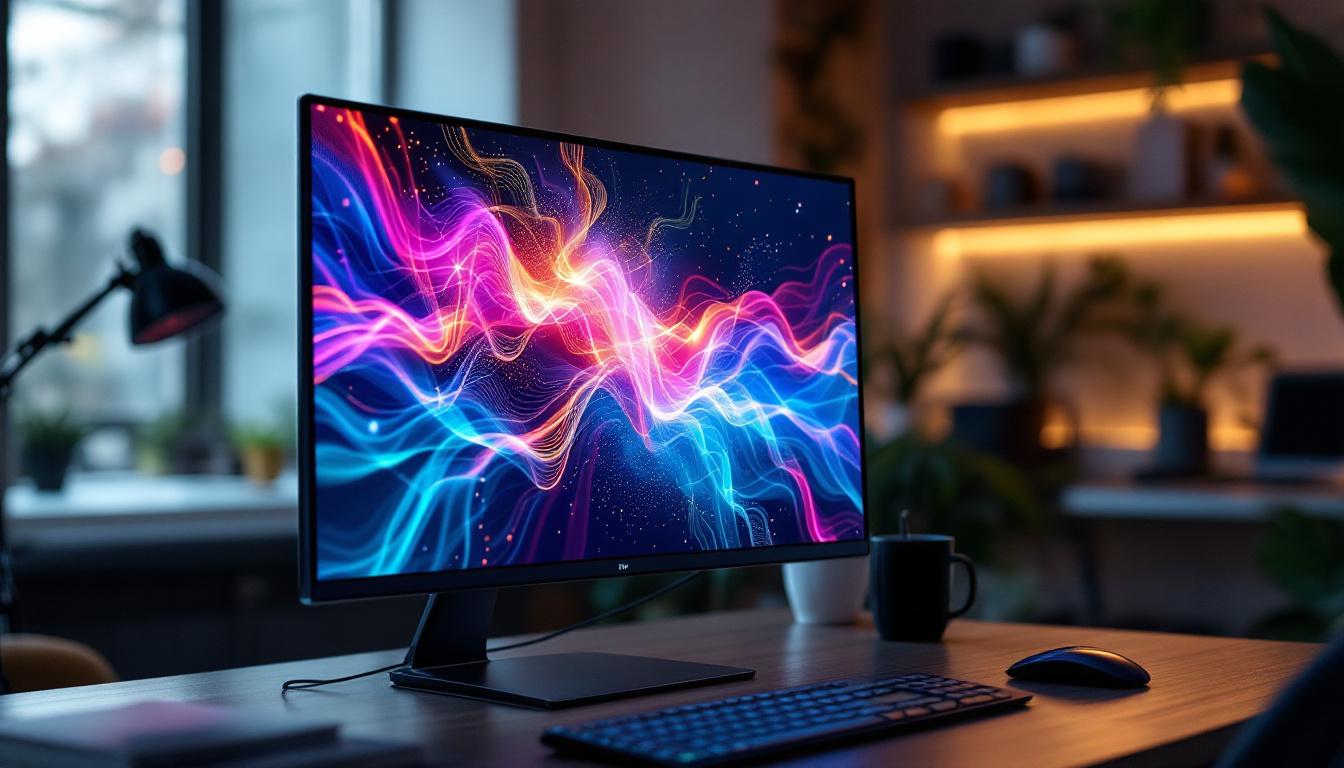When discussing LED displays, particularly those used in digital signage, stadium screens, or indoor video walls, one of the most crucial specifications is the pixel pitch. Pixel pitch is typically measured in millimeters and directly influences the display’s resolution, viewing distance, and overall image quality. Among the various pixel pitches available, 2.5 millimeters is a popular choice for many indoor LED displays. But what does 2.5 millimeters really mean in the context of LED technology? How big is 2.5 millimeters, and why does it matter so much for LED displays?
This article dives deep into the significance of the 2.5 mm pixel pitch, explaining its size, impact on image clarity, and ideal use cases. By the end, readers will have a clear understanding of how this seemingly small measurement plays a pivotal role in the performance and application of LED screens.
Understanding Pixel Pitch: The Basics
What Is Pixel Pitch?
Pixel pitch refers to the distance from the center of one LED pixel to the center of the adjacent pixel on an LED display. It is usually measured in millimeters. This measurement essentially determines how densely packed the LEDs are on the screen. A smaller pixel pitch means the LEDs are closer together, resulting in higher resolution and sharper images.
For example, a 2.5 mm pixel pitch means that each pixel is spaced 2.5 millimeters apart from the next. This tight spacing allows for a high pixel density, making the display suitable for close viewing distances where image clarity is paramount.
Why Pixel Pitch Matters
The pixel pitch directly affects the viewing experience in several ways:
- Resolution: Smaller pixel pitch means more pixels per square meter, resulting in higher resolution and finer detail.
- Viewing Distance: The optimal viewing distance decreases with smaller pixel pitch. Displays with a 2.5 mm pitch are designed to be viewed from relatively close distances without noticeable pixelation.
- Image Quality: A smaller pixel pitch reduces the “screen door effect,” where the gaps between pixels become visible to the naked eye.
Understanding these factors helps businesses and consumers choose the right LED display for their needs, balancing cost, size, and image quality.
How Big Is 2.5 Millimeters in Real Life?
Visualizing 2.5 Millimeters
To truly grasp the significance of a 2.5 mm pixel pitch, it helps to visualize the size. Two and a half millimeters is roughly the width of a standard grain of rice or the thickness of a typical credit card edge. It’s a small but tangible measurement.
In the context of an LED display, this means each pixel is spaced about as far apart as the width of a rice grain. When multiplied across thousands or even millions of pixels, this tight spacing creates a seamless and detailed image.
Comparisons to Other Pixel Pitches
Pixel pitches can range widely depending on the application:
- 10 mm and above: Common in large outdoor billboards viewed from hundreds of feet away.
- 4 to 6 mm: Suitable for medium-distance viewing, such as outdoor advertising or large indoor venues.
- 1.2 to 3 mm: Ideal for indoor applications requiring close viewing distances, such as retail stores, control rooms, and conference centers.
At 2.5 mm, the pixel pitch sits comfortably in the indoor category, offering a balance between high resolution and cost-effectiveness.
Technical Implications of a 2.5 mm Pixel Pitch
Pixel Density and Resolution
Pixel density is often expressed in pixels per square meter (pixels/m²). For a 2.5 mm pitch, the calculation is straightforward:
Since pixel pitch is the distance between pixels, the number of pixels per meter is 1000 mm divided by 2.5 mm, which equals 400 pixels per meter. Squaring this gives:
400 pixels/m × 400 pixels/m = 160,000 pixels/m²
This density allows for detailed images and smooth video playback, making 2.5 mm LED displays suitable for environments where viewers are within a few meters of the screen.
Optimal Viewing Distance
One of the most important considerations for LED displays is the optimal viewing distance, which is closely linked to pixel pitch. The general rule of thumb is that the optimal viewing distance in meters is approximately 1.5 to 2 times the pixel pitch in millimeters.
For a 2.5 mm pixel pitch:
Optimal viewing distance ≈ 1.5 × 2.5 mm to 2 × 2.5 mm = 3.75 m to 5 m (approximately 12 to 16 feet)
This means that viewers standing closer than about 3.75 meters might begin to notice individual pixels, while those farther away will enjoy a crisp, clear image. This range makes 2.5 mm LED displays ideal for indoor environments such as auditoriums, retail spaces, and corporate settings.
Brightness and Power Consumption
Smaller pixel pitches generally require more LEDs per square meter, which can impact both brightness and power consumption. A 2.5 mm LED display typically uses a high-density LED module that can deliver brightness levels suitable for indoor environments, usually between 800 to 1,200 nits.
While these displays consume more power than larger pixel pitch models due to the increased number of LEDs, advances in LED technology have improved energy efficiency, making 2.5 mm displays cost-effective over time.
Applications of 2.5 mm LED Displays
Indoor Digital Signage
Retail stores, shopping malls, and airports often utilize 2.5 mm LED displays for digital signage. The high resolution and close viewing distance capability allow for engaging advertisements, product promotions, and wayfinding information that capture attention without pixelation.
For example, luxury brand boutiques may use 2.5 mm LED walls to showcase high-definition videos and images that enhance the customer experience and brand perception.
Corporate and Conference Environments
In corporate boardrooms, conference centers, and auditoriums, 2.5 mm LED displays provide clear visuals for presentations, video conferencing, and live events. Their ability to deliver sharp images at moderate distances makes them ideal for professional settings where detail and clarity are critical.
Many modern conference rooms integrate 2.5 mm LED panels as an alternative to traditional projectors, offering better brightness, contrast, and color fidelity.
Broadcast Studios and Control Rooms
Broadcast studios and control rooms require displays that deliver precise color accuracy and high resolution for monitoring content and data. The 2.5 mm pixel pitch strikes a balance between image quality and cost, making it a preferred choice for video walls and monitoring stations.
These environments benefit from the reduced “screen door effect” and excellent viewing angles provided by 2.5 mm LED panels.
Comparing 2.5 mm LED Displays to Alternatives
Versus LCD Video Walls
While LCD video walls are common, especially in indoor environments, 2.5 mm LED displays offer several advantages:
- Seamless Image: LED displays have no bezels between panels, creating a continuous image without visible gaps.
- Brightness: LEDs can achieve higher brightness levels, making them better suited for well-lit environments.
- Viewing Angles: LED displays typically have wider viewing angles, ensuring consistent image quality from different positions.
However, LCD walls may offer better contrast ratios in some cases and can be more cost-effective for smaller installations.
Versus Smaller Pixel Pitch LED Displays
LED displays with pixel pitches smaller than 2.5 mm, such as 1.5 mm or 1.2 mm, offer even higher resolution and are suitable for very close viewing distances, such as control rooms or high-end retail applications. However, these come at a significantly higher cost and increased power consumption.
Choosing 2.5 mm pixel pitch often represents a practical compromise, delivering excellent image quality while maintaining reasonable costs and installation flexibility.
Installation and Maintenance Considerations
Modular Design and Scalability
Most 2.5 mm LED displays are constructed from modular panels, allowing for scalable screen sizes tailored to specific spaces. This modularity simplifies installation, maintenance, and future upgrades.
Technicians can replace individual modules if they malfunction, minimizing downtime and repair costs.
Calibration and Color Uniformity
To achieve the best image quality, 2.5 mm LED displays require precise calibration. This process ensures color uniformity across the entire screen and compensates for any variances in brightness or color temperature between modules.
Advanced calibration tools and software are often used during installation and routine maintenance to maintain optimal performance.
Future Trends and Innovations
Increasing Resolution and Pixel Density
As LED technology advances, pixel pitches continue to shrink, pushing the boundaries of resolution and image quality. While 2.5 mm remains popular today, emerging displays with sub-2 mm pixel pitches are becoming more accessible, especially for premium indoor applications.
These smaller pitches enable even closer viewing distances without visible pixels, opening new possibilities for immersive digital experiences.
Energy Efficiency and Sustainability
Manufacturers are focusing on reducing power consumption and improving the environmental footprint of LED displays. Innovations in LED chip design, driver electronics, and cooling systems contribute to more sustainable 2.5 mm LED displays.
Energy-efficient displays not only reduce operating costs but also align with corporate sustainability goals, an increasingly important consideration for buyers.
Conclusion: Why 2.5 Millimeters Matters in LED Displays
The 2.5 mm pixel pitch represents a critical measurement that balances resolution, viewing distance, cost, and energy consumption for indoor LED displays. Understanding how big 2.5 millimeters is in real terms helps demystify why this specification is so important when selecting an LED screen.
Whether used for retail digital signage, corporate video walls, or broadcast control rooms, 2.5 mm LED displays deliver sharp, vibrant images that engage viewers at close to moderate distances. As technology evolves, this pixel pitch will continue to serve as a benchmark for high-quality indoor LED solutions.
For anyone considering an LED display installation, appreciating the significance of the 2.5 mm pixel pitch is essential to making an informed decision that meets both visual and budgetary requirements.
Discover the Precision of LumenMatrix LED Displays
Ready to experience the exceptional clarity and vibrant visuals that a 2.5 mm pixel pitch LED display can offer? LumenMatrix is at the forefront of LED display technology, providing a wide array of innovative solutions tailored to your needs. From captivating Indoor LED Wall Displays to dynamic Outdoor LED Wall Displays, and from versatile Vehicle LED Displays to sleek LED Poster Displays, our products are designed to elevate your brand and engage your audience. Embrace the future of visual communication with LumenMatrix’s cutting-edge LED Sports Displays, interactive Floor LED Displays, and the revolutionary All-in-One LED Display. Don’t just take our word for it; check out LumenMatrix LED Display Solutions today and see how we can transform your space into a mesmerizing visual experience.





